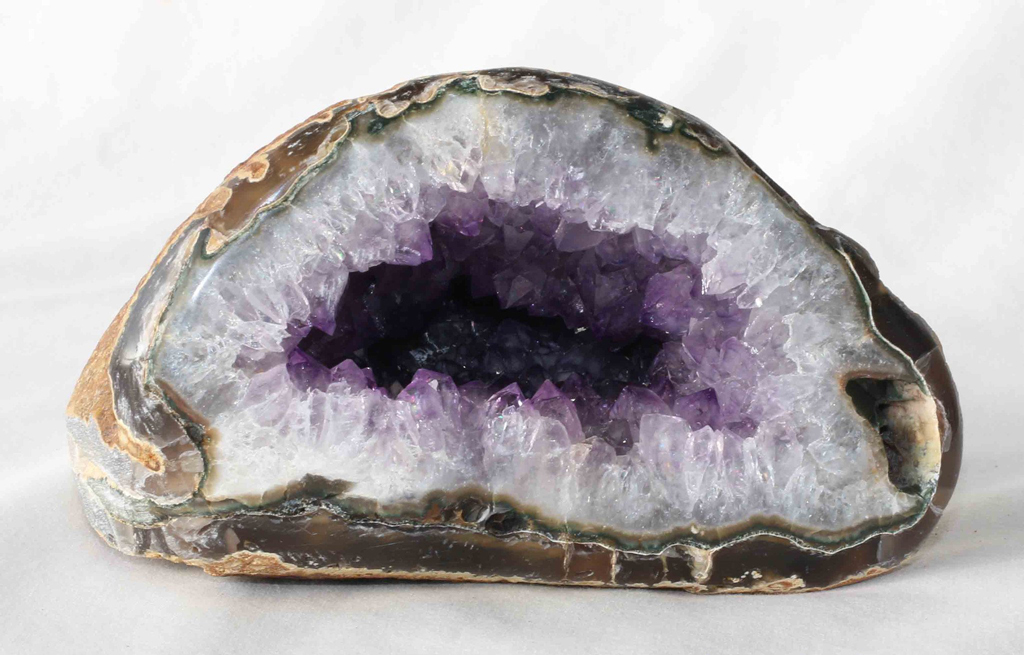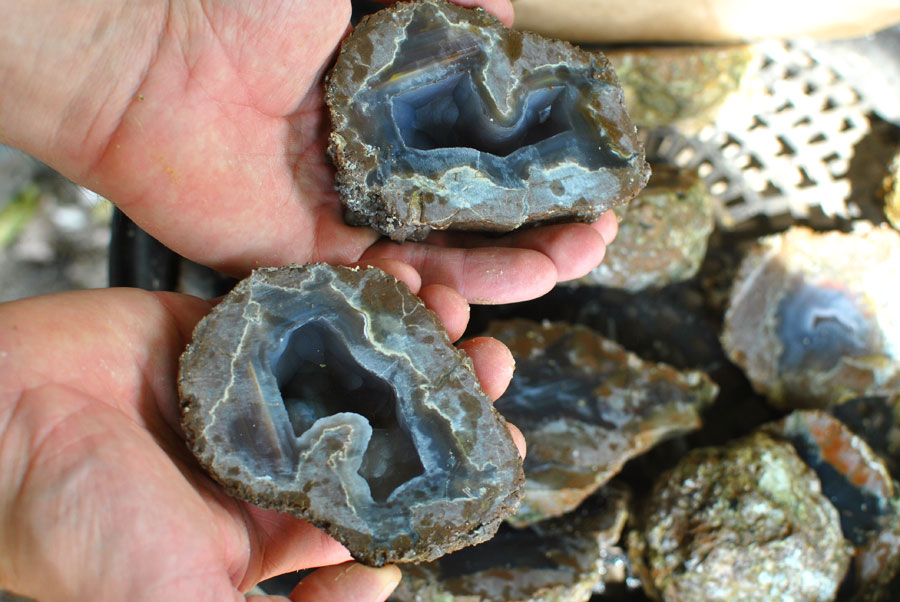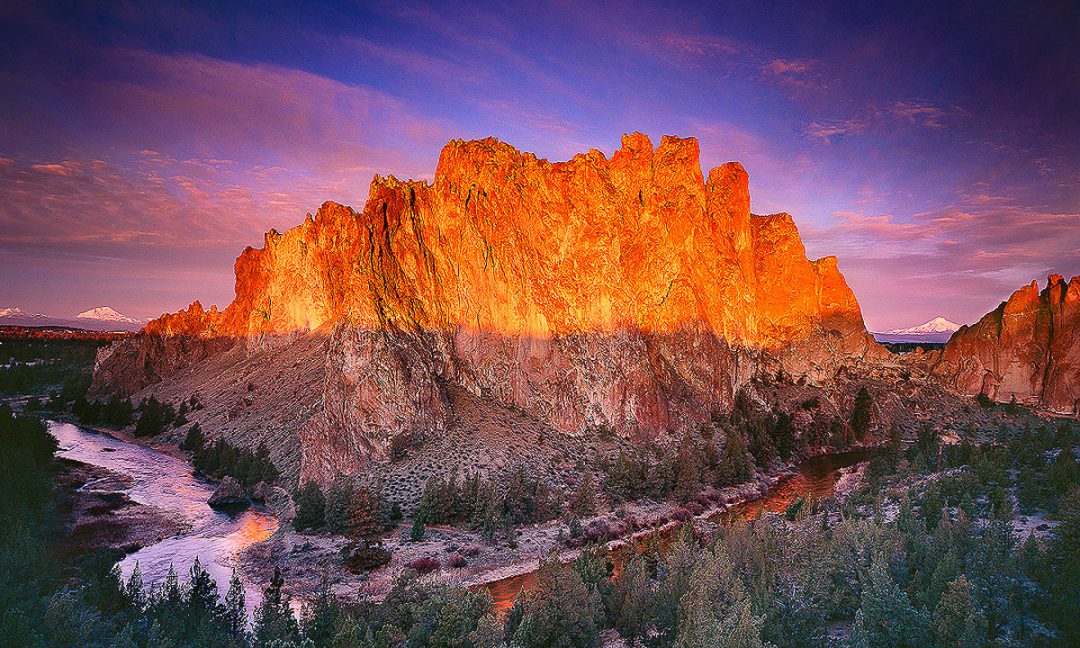Photo by Tom Benson
OREGON'S STATE ROCK
This week we're talking about Oregon's State Rock: the very beautiful (and very strange) Thunderegg! The Thunderegg was elected to be Oregon's official State Rock in 1965 by the state's Legislative Assembly. Oregon has more than a few "rockhounds," and Central Oregon has become a popular destination for rock enthusiasts interested in digging up and collecting these special treasures.
FORM & FORMATION
There's still some speculation about how these rocks are formed. Some say these nodule-like rocks are formed within layers of volcanic ash, in gas pockets that served as molds. Over a long period of time, the gas cools, and the gap fills with water percolating through the porous rock formation. It is said that the water that fills these spaces is rich with large quantities of quartz, resulting in unique formations.
Geodes, agates, and Thundereggs can be colorful, and are often used decoratively
Thundereggs generally have a center composed of chalcedony, with deposits of agate, jasper or opal. Rockhounds have also encountered Thundereggs with quartz and gypsum crystals, as well as various other mineral growths and inclusions.
These rough, round geological formations are usually about the size of a baseball and are not necessarily synonymous with geodes or agates. Where geodes are always characterized by a hollow center, Thundereggs can have a hollow center, or be completely solid all the way through.
Agates are a more general type of rock formation. Agates are simply a hard variety of chalcedony, typically with a banded appearance of several repeating lines. A Thunderegg is just one of many forms an agate can take.
Richardson's Rock Ranch. Photos by RoomtoRamble.com
WHERE ARE THEY?
These super cool formations are highly concentrated in Central Oregon (of course), with but can also be found across the world.
One of the most popular destinations to hunt for Thundereggs is the Richardson Rock Ranch in Madras, Oregon. This place has been in business for 44 years, making it possible for rockhounds to root around in the dusty desert hills to see what you can find! Side note: they also have a few amazing peacocks strutting throughout their property.
Though Central Oregon is definitely the most well-known, and most highly-concentrated site for Thundereggs, these rock formations have been found in Germany, Ethiopia, Poland, Mexico, Argentina, Turkey, and more.
The Legend of the Thunderbird
The native people of Central Oregon are said to have believed that these rocks are the eggs of the Thunder Spirits, which took the shape of giant birds roosting at the top of Mount Jefferson and Mount Hood. According to this legend, thunderstorms occurred when the Thunderbirds would fight among themselves, hurling their eggs at each other in anger, ultimately embedding in the ground. It is for this reason, according to this legend, that the eggs are scattered all across this region.




















